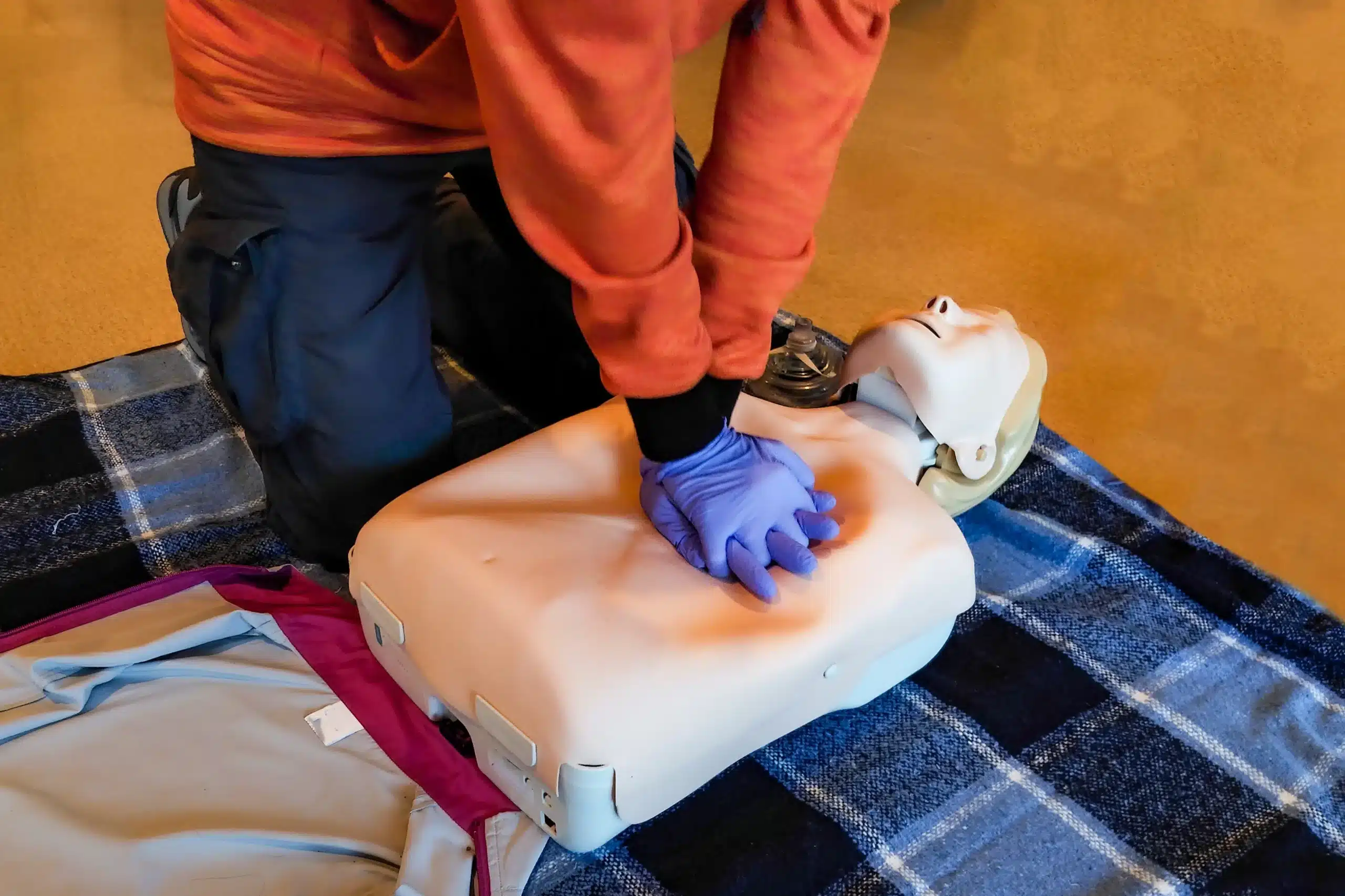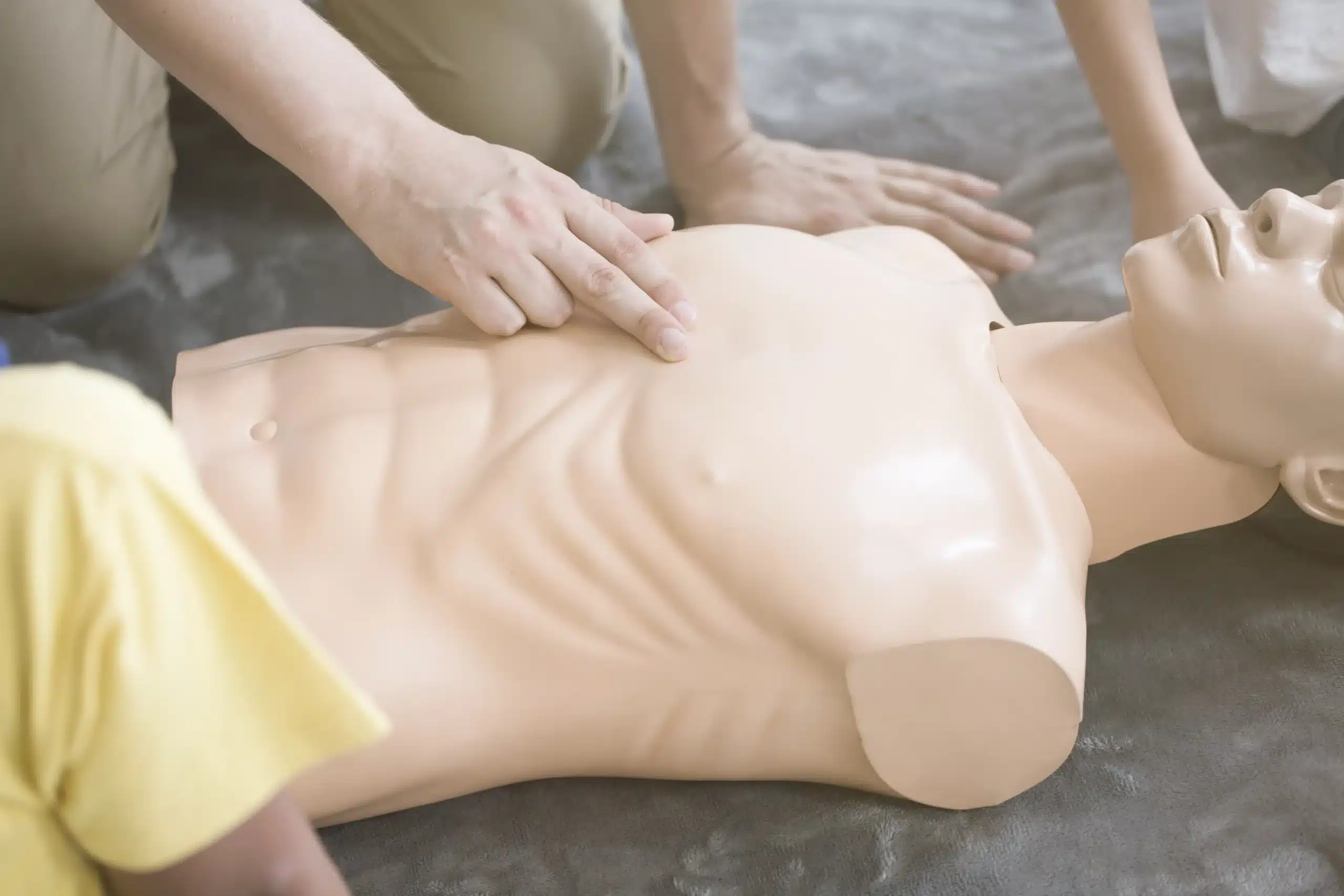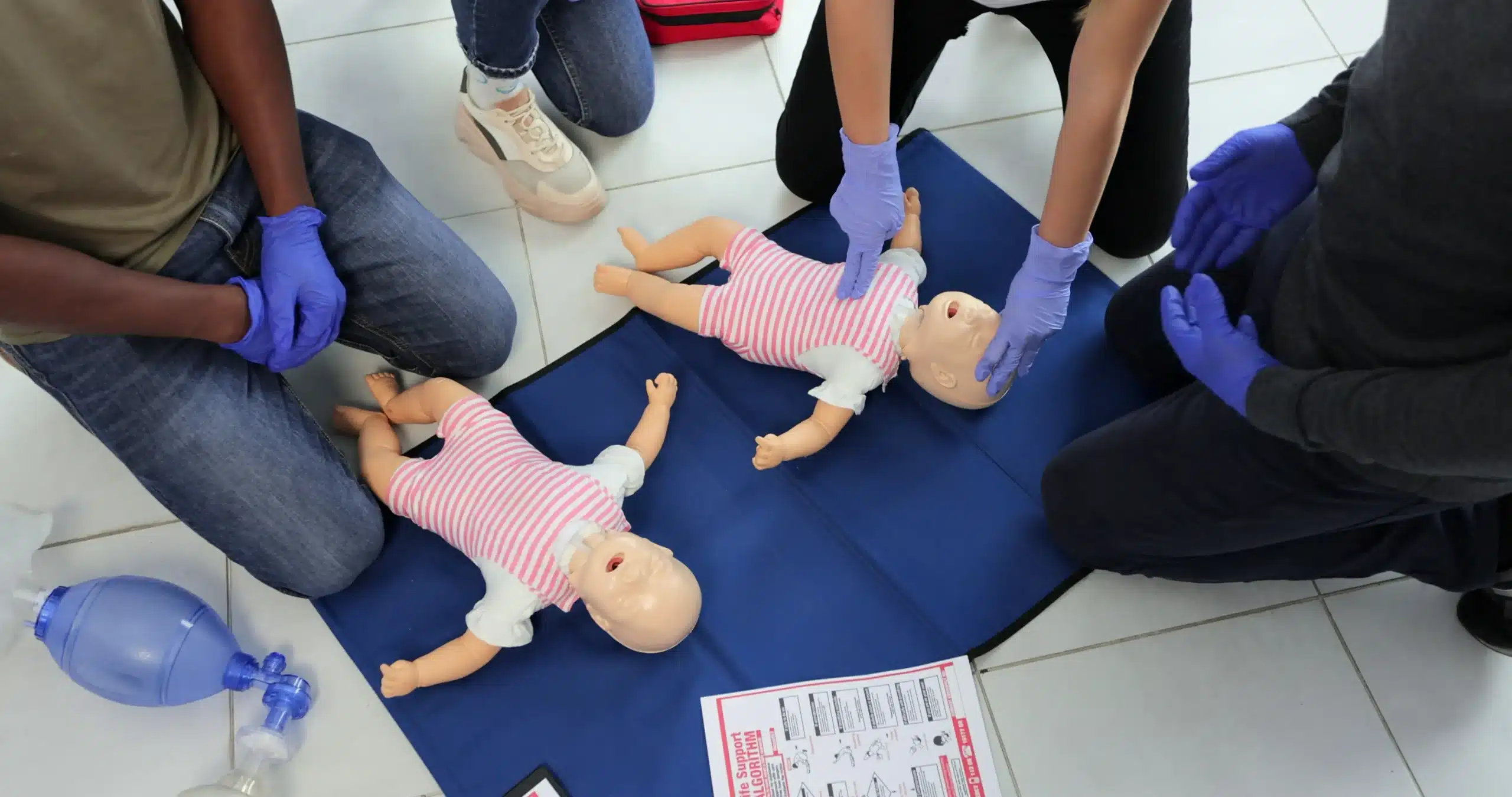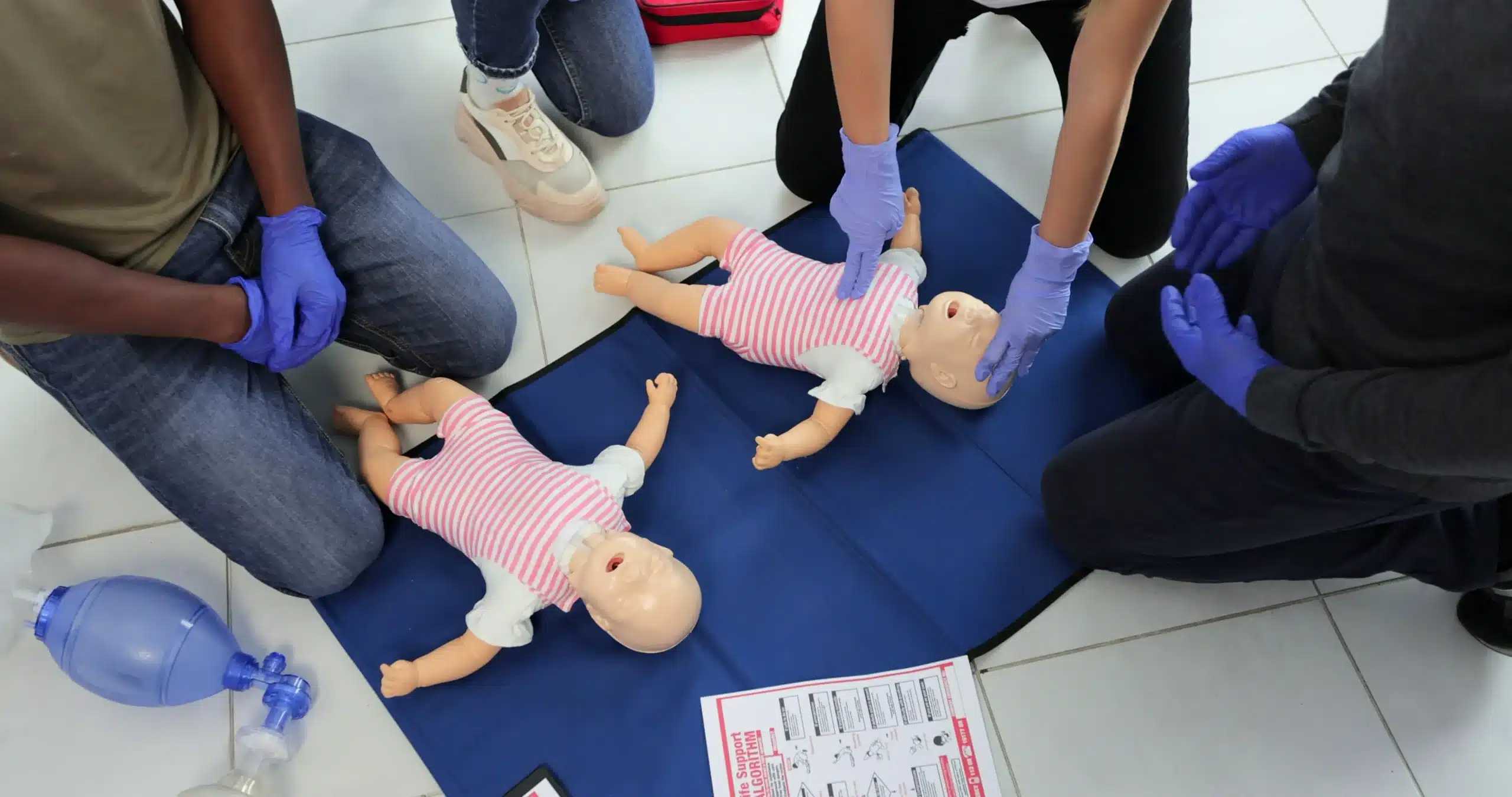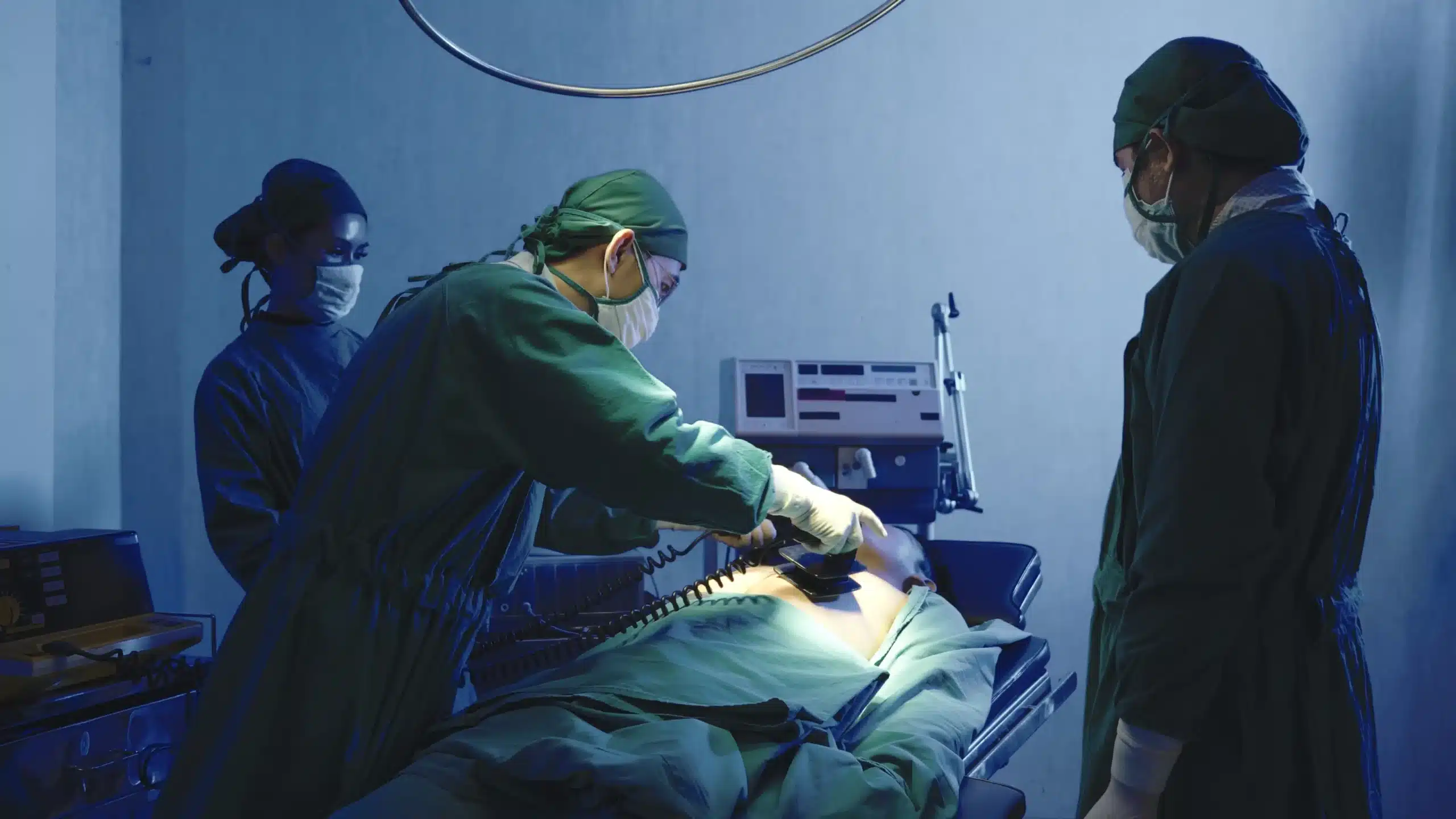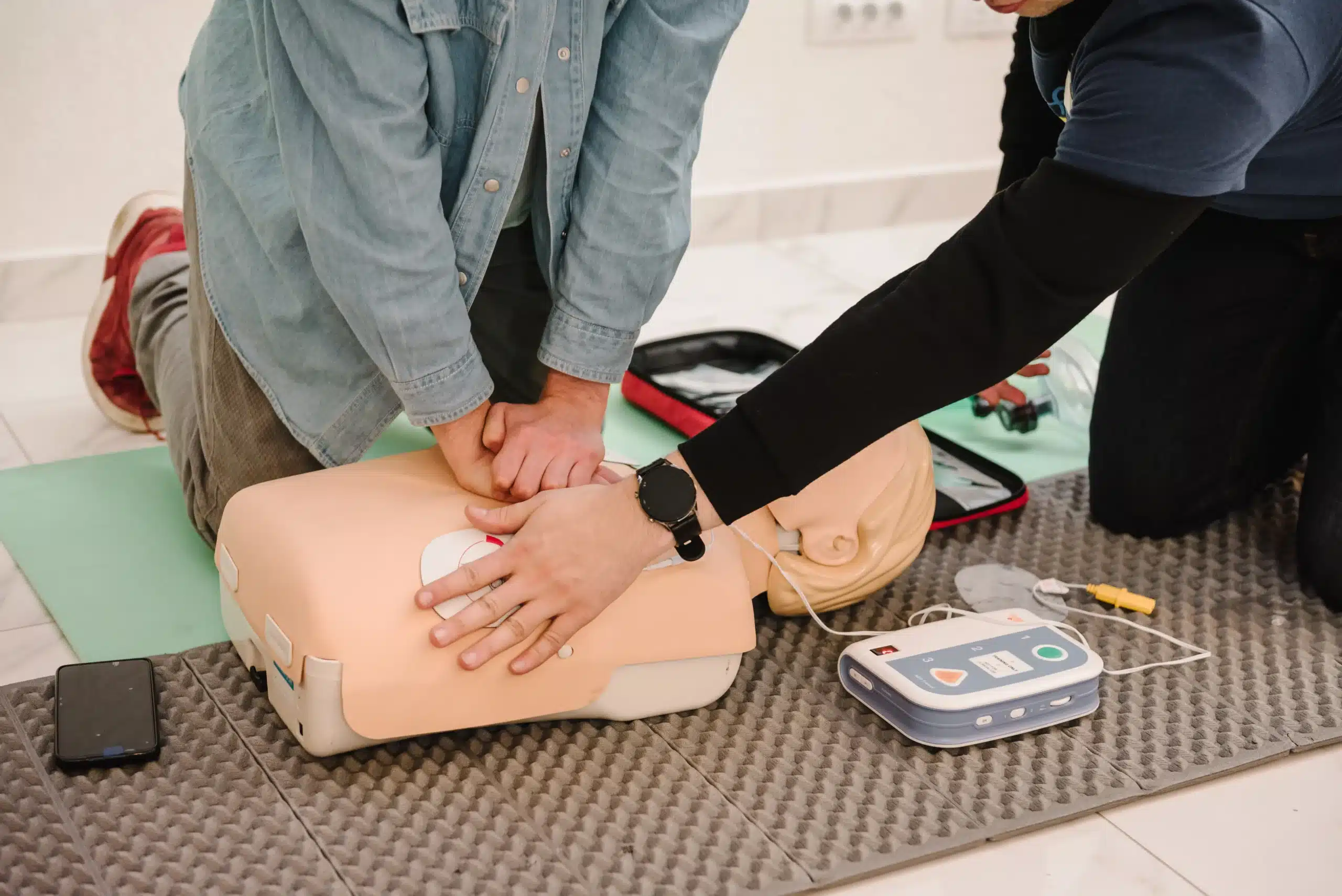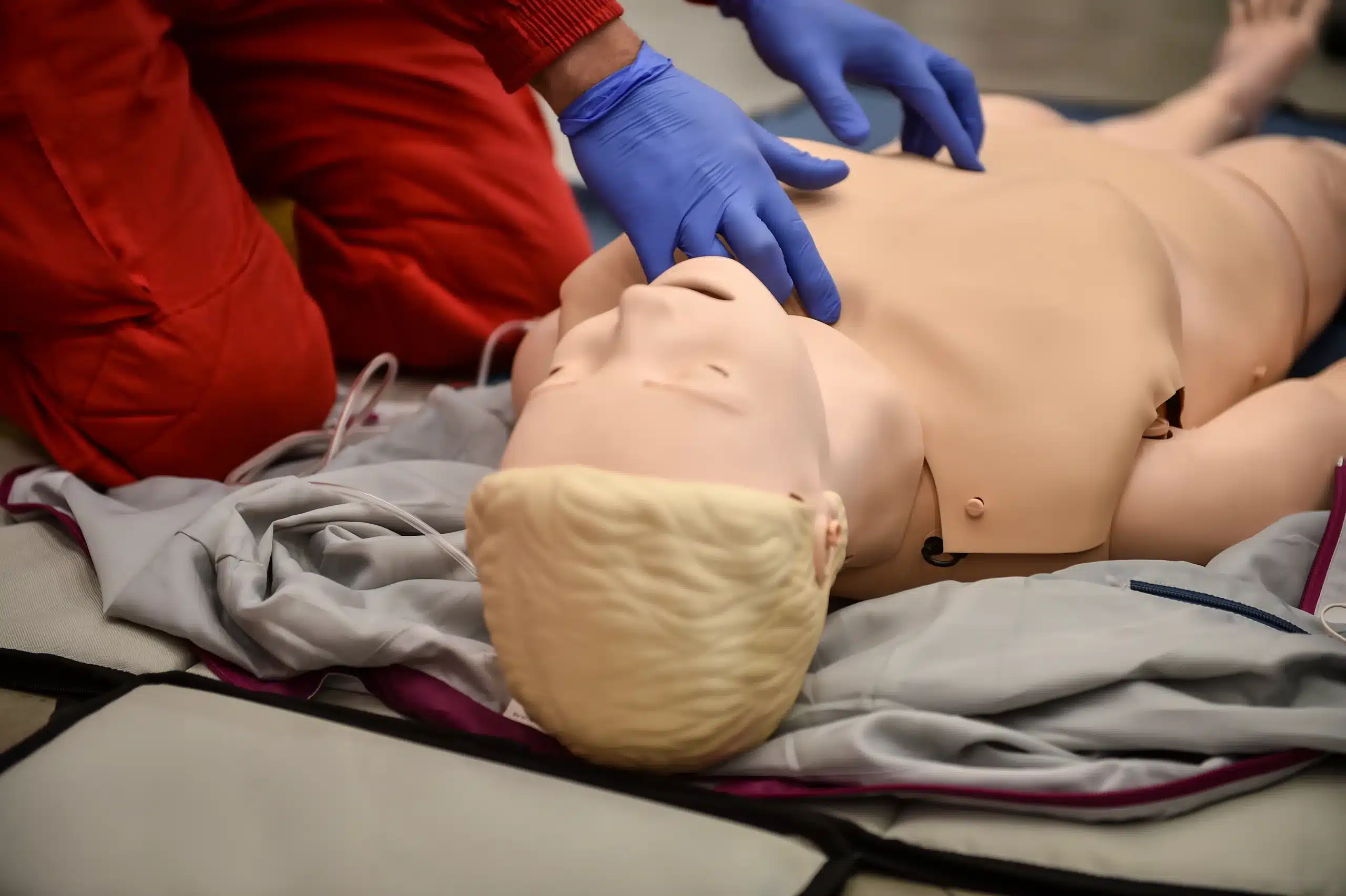In a world where medical emergencies can happen anytime, anywhere, being equipped with life-saving skills is more important than ever. But with various certifications available, it’s essential to understand which one best suits your needs. This comprehensive guide explores CPR vs. BLS: What’s the Difference and Why It Matters? We’ll unpack the core components of each technique, discuss the benefits of certification, and guide you in choosing the right course for your personal and professional goals. Whether you’re a concerned parent, a healthcare professional, or simply someone who wants to be prepared, this article will provide valuable insights into the world of CPR and BLS. Join us as we delve into the specifics of each technique, debunk common myths, and empower you to become a confident first responder.
Key Takeaways
- CPR and BLS are essential skills for different situations: CPR equips anyone to respond to basic life-threatening emergencies, while BLS provides healthcare professionals with more advanced techniques for complex medical situations. Consider your role and choose the certification that aligns with your needs.
- Hands-on training and practice are key: Mastering life-saving techniques requires more than just reading about them. Seek professional training with certified instructors who can provide feedback and guidance. Regular practice and recertification are essential for maintaining proficiency.
- Understanding the difference empowers better responses: Knowing when to apply CPR versus BLS allows you to provide the most appropriate care in an emergency. This knowledge strengthens the chain of survival in our communities and workplaces, ultimately leading to better outcomes.
What is CPR?
CPR stands for cardiopulmonary resuscitation. It’s a lifesaving technique used when someone’s breathing or heartbeat has stopped. CPR helps maintain blood flow to the brain and other vital organs until professional medical help arrives. Think of it as a bridge, keeping someone alive until paramedics can take over. Learning CPR empowers you to make a real difference in a critical situation. Our CPR and First Aid certification courses will equip you with these vital skills.
What is CPR and when do you use it?
CPR is essential in emergencies like cardiac arrest, where the heart malfunctions and can’t circulate blood effectively. This lack of blood flow quickly deprives the brain and other vital organs of oxygen. Every second counts in these situations, as brain damage can occur within minutes. CPR buys crucial time by manually circulating blood and delivering some oxygen until professional rescuers arrive. Knowing when to administer CPR can truly be the difference between life and death.
Key CPR techniques
CPR involves two main techniques: chest compressions and rescue breaths. Effective CPR involves performing chest compressions at a rate of 100-120 compressions per minute. The traditional approach includes cycles of 30 compressions followed by two rescue breaths. However, “hands-only” CPR, focusing solely on chest compressions, has also proven effective for adults experiencing cardiac arrest. Our CPR courses cover both methods, giving you the confidence to respond effectively in various emergency scenarios. We’ll teach you the proper techniques for delivering high-quality CPR that maximizes the chances of survival.
What is BLS?
Defining Basic Life Support
Basic Life Support (BLS) builds on the foundation of standard CPR. Think of CPR as the first step, and BLS as the next level up, adding essential skills and knowledge. BLS includes the core components of CPR—chest compressions and rescue breaths—and expands on them by incorporating techniques like assessing the scene for safety, opening and maintaining an airway, and using a bag-valve mask. It also emphasizes critical thinking and problem-solving in medical emergencies. The American Red Cross BLS program highlights this important combination of practical skills and quick decision-making. BLS is designed to provide a higher level of care than standard CPR, making it especially valuable for healthcare providers and first responders.
BLS vs. CPR: Key differences and advanced techniques
CPR equips you to handle many emergency situations, but BLS provides more comprehensive training. BLS certification is designed for healthcare professionals—doctors, nurses, EMTs—and anyone who regularly encounters medical emergencies. It includes advanced techniques like two-rescuer CPR and using a bag-valve mask for more effective ventilation. BLS training also covers a broader range of skills, such as a more in-depth patient assessment and specialized airway management techniques. CPR is often sufficient for bystanders in most non-medical emergencies, but BLS gives healthcare professionals the advanced skills they need to deliver more comprehensive care in complex medical situations. You can learn more about the differences between CPR and BLS at CPR Educators, Inc..
Who Needs CPR vs. BLS Training?
Knowing the difference between CPR and BLS helps you choose the right certification. While both teach life-saving skills, they address different situations and skill levels.
Who should learn CPR?
CPR certification gives you basic life-saving tools. It’s great for anyone who wants to be prepared for emergencies, even without medical training. Think babysitters, coaches, teachers, parents, and other community members. CPR training is a valuable skill for anyone.
Who should get BLS certified?
BLS certification is designed for healthcare professionals and first responders, including doctors, nurses, EMTs, and other healthcare providers. It expands on CPR, adding advanced techniques and a deeper understanding of life support. If you’re pursuing or already working in a medical field, you’ll likely need BLS certification.
Benefits for individuals and communities
Both CPR and BLS training offer important advantages. These certifications give individuals the confidence and skills to respond effectively in emergencies. For communities, having more people trained in CPR and BLS creates a stronger support system and can greatly improve survival rates for those experiencing sudden cardiac arrest. Research shows how bystander CPR makes a difference. Ready to learn more? Explore our CPR and First Aid Certification courses.
What Will You Learn in CPR and BLS Courses?
CPR techniques and procedures
CPR (Cardiopulmonary Resuscitation) is a life-saving technique used when someone’s heart or breathing has stopped. It’s a skill everyone should learn, as it can be performed in emergencies before professional help arrives. There are two main types of CPR. Hands-Only CPR involves chest compressions only, while Conventional CPR includes both chest compressions and rescue breaths. Regardless of the type, the goal of effective CPR is to maintain a consistent rate of 100-120 chest compressions per minute. You’ll learn how to assess the scene, ensure safety, perform chest compressions correctly, open the airway, and deliver rescue breaths (if applicable). CPR courses also cover how to recognize the signs of a cardiac arrest and when to call 911. Learn more about our CPR and First-Aid certification courses.
Additional BLS skills
BLS (Basic Life Support) builds upon the foundation of CPR and incorporates a broader range of skills. It’s generally geared towards healthcare providers and first responders. BLS certification includes CPR techniques, how to use an AED (Automated External Defibrillator), and methods for managing choking and other airway obstructions. BLS training emphasizes not only the physical skills but also the critical thinking needed in emergencies. You’ll learn how to assess a patient’s condition, make quick decisions, work effectively as part of a team, and provide more advanced life support care. This training is often required for professions like EMTs, nurses, and firefighters.
AEDs in CPR and BLS
Both CPR and BLS courses incorporate training on how to use an AED (Automated External Defibrillator). AEDs are portable electronic devices that can analyze a heart’s rhythm and deliver an electric shock if necessary to restore a normal heartbeat. In your course, you’ll learn how to operate an AED safely and effectively, including how to place the pads correctly, when to deliver a shock, and what to do after the shock has been administered. Understanding how to use an AED is a crucial component of both CPR and BLS training and can significantly increase the chances of survival for someone experiencing sudden cardiac arrest. Safety Training Seminars offers a low price guarantee on all courses, including those covering AED usage.
Why Get Certified in CPR and BLS?
Knowing CPR and BLS can truly make a difference in critical situations. These skills empower you to respond effectively during medical emergencies, potentially saving lives. Let’s explore why getting certified is so valuable.
Benefits of Certification
CPR and BLS certifications go beyond simply learning techniques; they instill confidence and preparedness. Studies show that certified individuals are more likely to take action during emergencies, providing crucial support until professional help arrives. This immediate response can significantly improve outcomes, especially for out-of-hospital cardiac arrests. Effective training, like the courses offered at Safety Training Seminars, emphasizes hands-on practice and objective feedback, leading to better skill retention and performance in stressful situations. This research on BLS education00700-5/fulltext) highlights the importance of training across diverse population groups. A certification also demonstrates your commitment to safety, a valuable asset personally and professionally.
Choosing the Right Course
Deciding between CPR and BLS certification depends on your individual needs. Consider your profession and how often you might encounter medical emergencies. CPR training provides essential life-saving techniques for anyone, while BLS certification is typically more in-depth. BLS builds upon CPR, adding skills like airway management and using bag-valve masks, making it well-suited for healthcare providers and those in roles requiring a higher level of emergency response. This article further explains the differences between BLS and CPR.
Certification Options at Safety Training Seminars
At Safety Training Seminars, we offer CPR and BLS certifications, each valid for two years and aligned with industry standards. Our courses are designed for flexibility and convenience, with group discounts available. We prioritize staying current with the latest guidelines, ensuring our curriculum reflects best practices. Like the Red Cross, we’re committed to providing high-quality training that empowers you to respond confidently in emergencies. You’ll receive your certification card the same day you complete your course. Learn more about our low price guarantee and find a course that works for you.
How to Respond to Emergencies
Using CPR in different situations
CPR (Cardiopulmonary Resuscitation) is a life-saving technique used when someone’s heart has stopped beating or they’re not breathing. It helps maintain blood circulation and oxygen flow until professional medical help arrives. Anyone can learn CPR, making it a critical skill for bystanders during emergencies like a heart attack, near-drowning, or after a traumatic injury. Learn more about our CPR certification courses.
The BLS approach to complex emergencies
BLS (Basic Life Support) builds on CPR and includes additional skills for handling more complex emergencies. Besides CPR, BLS covers using an AED (Automated External Defibrillator) and managing choking. It’s often taught to healthcare providers and first responders, giving them a broader skillset for various life-threatening situations. Consider getting your BLS certification for a more comprehensive approach to emergency response.
Importance of quick action and proper technique
In emergencies, seconds count. High-quality CPR involves delivering 100–120 chest compressions per minute. Acting quickly and using the correct techniques can significantly impact survival rates. Proper training, including immediate feedback during practice, is essential for developing effective skills. Both CPR and BLS certifications typically require renewal every two years to ensure your skills stay sharp and aligned with the latest guidelines. This regular training reinforces best practices and helps maintain proficiency in these life-saving techniques. Learn more about the importance of immediate feedback in training.
Common CPR and BLS Misconceptions
Debunking Myths and Misunderstandings
It’s easy to pick up inaccurate information about CPR and BLS, especially from movies and TV. One common misconception is that everyone knows how to perform CPR. The truth is, effective CPR requires training. While the basics might seem simple, proper technique—including chest compression depth and rate—is crucial for positive outcomes. Another myth is that CPR always restarts the heart. CPR primarily maintains blood flow to vital organs until professional help arrives. It buys time, increasing the chance of survival and minimizing potential brain damage. Don’t let these misunderstandings prevent you from seeking CPR training! Learning CPR empowers you to make a real difference in an emergency. Studies show that widespread BLS training across diverse communities significantly increases bystander response, a key factor in improving outcomes for out-of-hospital cardiac arrest (OHCA00700-5/fulltext)).
The Importance of Professional Training
While online resources offer basic information, professional, hands-on training is essential for mastering CPR and BLS. Qualified instructors provide real-time feedback and personalized guidance, ensuring you learn the correct techniques. This personalized instruction is invaluable. Research shows that objective feedback00716-7/pdf) during training significantly improves BLS skill performance, both immediately after training and weeks later. Furthermore, using training equipment with electronic feedback helps students refine their CPR technique and understand the nuances of effective compressions. Investing in professional training builds confidence and equips you with the skills to respond effectively under pressure. At Safety Training Seminars, our certified instructors create a supportive learning environment, giving you the practice and feedback you need to become a confident lifesaver. Check out our course options and find the right fit for you.
How CPR and BLS Impact Patient Outcomes
Learning CPR and BLS can truly make a difference in life-or-death situations. These skills empower you to provide immediate assistance during medical emergencies, significantly impacting patient outcomes. Let’s explore the powerful impact of these life-saving techniques.
Statistics on Survival Rates and Effectiveness
The statistics speak for themselves: sudden cardiac arrest (SCA) claims roughly 350,000 lives in the US each year. Knowing CPR or BLS can dramatically improve survival rates, offering a vital lifeline to those experiencing SCA. Bystander CPR plays a critical role, significantly increasing the chances of survival. Immediate action by someone trained in these techniques can be the difference between life and death.
Why Immediate Action is Critical
When someone experiences sudden cardiac arrest, every second counts. The American Heart Association emphasizes that immediate CPR can double or even triple a victim’s chance of survival. Think about that—your quick response can drastically alter the course of events. Studies have also shown that basic life support (BLS) training not only equips healthcare providers with the necessary skills but also positively influences their willingness to step in during emergencies. This proactive approach, fueled by training and confidence, is essential for positive patient outcomes. The sooner CPR is initiated, the greater the likelihood of a positive outcome. That’s why getting trained in CPR and BLS at Safety Training Seminars is so important—it equips you with the tools and the confidence to act quickly and effectively when it matters most. Register for a class and become a vital link in the chain of survival.
How to Maintain Your Life-Saving Skills
Knowing CPR and BLS can empower you to make a real difference in critical situations. But like any skill, regular practice and staying up-to-date are key to maintaining proficiency. This section covers why recertification matters, how to stay informed about the latest guidelines, and practical ways to keep your skills sharp.
Why recertify?
Recertification isn’t just about checking a box; it’s about ensuring you’re equipped with the most current, effective life-saving techniques. As guidelines and best practices evolve, recertification keeps your knowledge fresh and your skills aligned with the latest recommendations. Plus, studies show that more training experience correlates with increased confidence and reduced anxiety when facing real-life emergencies. This means that regular recertification not only reinforces your skills but also helps you stay calm and focused under pressure.
Staying updated with guidelines
Staying current with evolving guidelines is crucial for providing the most effective care. Basic Life Support (BLS) training, which includes CPR, AED use, and airway management, emphasizes both physical skills and critical thinking. This focus on problem-solving prepares you to adapt to new guidelines and apply them effectively in various emergency scenarios. Organizations like the American Heart Association regularly update their guidelines, so staying informed is essential for delivering high-quality care.
Practical ways to practice your skills
Consistent practice is the cornerstone of maintaining proficiency in any skill, especially life-saving techniques like CPR. Studies have shown that incorporating objective feedback during training significantly improves both immediate and long-term performance. Using tools that provide feedback on your technique, such as specialized mannequins or apps, can help you identify areas for improvement and refine your skills. Even practicing on a pillow can help maintain muscle memory and reinforce proper hand placement and compression depth. Consider joining a group class for a hands-on learning experience and the opportunity to practice with instructors and peers. You can find information on our low price guarantee for all our courses.
Why Knowing the Difference Between CPR and BLS Matters
Understanding the difference between CPR and BLS isn’t just about semantics; it’s about equipping yourself with the right knowledge and skills to respond effectively in emergencies. This understanding has important legal and professional implications, empowers individuals to save lives, and strengthens the chain of survival in our workplaces and communities.
Legal and Professional Considerations
For many healthcare professionals, BLS certification is a job requirement. Think EMTs, nurses, paramedics, and other medical personnel—BLS is often a prerequisite for these roles. This is because these professions regularly encounter medical emergencies where advanced life support skills are necessary. While CPR skills are valuable, BLS certification demonstrates a higher level of proficiency, covering a broader range of situations. If you’re considering a career in healthcare, understanding the difference and pursuing the appropriate certification is crucial. Even outside of healthcare, certain professions, like lifeguards or firefighters, may require or benefit from BLS training.
Empowering People to Save Lives
Knowing the difference between CPR and BLS empowers you to make informed decisions in emergencies. It helps you assess the situation and determine the most appropriate course of action based on your training. CPR provides foundational life-saving skills, focusing on chest compressions and rescue breaths. BLS builds upon these skills, adding techniques like airway management and the use of an AED. Understanding these distinctions allows you to confidently apply your skills and potentially save a life, whether you’re a medical professional or a concerned bystander. Both CPR and BLS are vital skills, and knowing which one applies to a given situation can make all the difference.
CPR and BLS in the Workplace and Community
CPR certification is often sufficient for many workplaces and community settings. It equips individuals with the skills to respond to basic life-threatening emergencies, creating a safer environment for everyone. However, workplaces with a higher risk of medical emergencies, such as hospitals or clinics, often require their staff to have BLS certification. This ensures a more comprehensive response capability, including emergency assessment and more advanced airway management techniques. Having both CPR- and BLS-trained individuals in a community strengthens the overall response network, creating a more resilient and prepared community. Whether you’re at work, at home, or out in the community, understanding the difference between CPR and BLS and having the appropriate training can truly make a difference in the outcome of an emergency.
Related Articles
- Why CPR is Essential for Saving Lives
- The Science Behind Effective CPR: A Comprehensive Guide
- BLS Courses in Berkeley: Your Complete Guide – Alameda CPR Classes
- BLS Training in Alameda: The Ultimate Guide – Alameda CPR Classes
- CPR Training in Oakland: Your Guide to Certification – Alameda CPR Classes
Frequently Asked Questions
If I’m not a healthcare professional, is CPR training enough, or should I consider BLS?
CPR training is a great starting point and empowers you to help in many emergencies. BLS certification adds more advanced skills and is often preferred for healthcare providers or those in higher-risk workplaces. Consider your current role and how often you might encounter medical emergencies when making your decision. If you’re unsure, contact us – we’re happy to help you choose the right course!
How often do I need to renew my CPR or BLS certification?
Both CPR and BLS certifications are typically valid for two years. Renewing your certification ensures you stay up-to-date with the latest guidelines and best practices, maximizing your effectiveness in an emergency.
What if I’m nervous about responding to a real emergency?
It’s completely normal to feel apprehensive. Our courses emphasize hands-on practice and feedback in a supportive environment. This helps build confidence and prepares you to act calmly and effectively under pressure.
Does Safety Training Seminars offer group discounts?
Yes, we offer discounts for group classes. It’s a great way to train a team or group of friends together and save on costs. Contact us for more information about group rates and scheduling.
What’s the difference between “hands-only” CPR and conventional CPR?
Hands-only CPR focuses solely on chest compressions, while conventional CPR involves both chest compressions and rescue breaths. Both methods are effective, and our courses cover both techniques, giving you the flexibility to respond appropriately in different situations.


